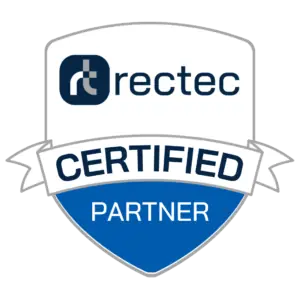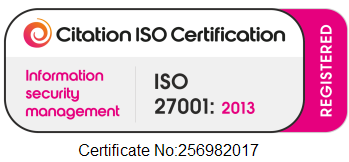The In House Recruitment Tool Kit
Every department needs a tool kit, Finance need software and MI, sales need data, marketing material and leads but what does a recruitment department need? A question which often isn’t asked. Recruiters need the tools to do their job. Recruiters may manage applicants via email addresses, paper applications, advertising via various job boards but what does a recruiter need in their toolkit to make the process efficient and engaging for all stakeholders in the recruitment process?
The first thing to clarify is who are the stakeholders in the process that will use this toolkit?
- Candidate
- Hiring Manager
- Recruitment Team
All of the above are of equal importance in the recruitment process. Read our Recruitment Stakeholders article for more info on each of these.
What does a recruiter need in their toolkit? This will depend on the type of recruitment we are doing, bulk? Executive? Of course the process for these varies, but overall the tool kit can be split into three sections:
- Marketing
- Technology
- Recruitment
All three of these areas have to work together in order to recruit efficiently, the tools used within each area can vary.
Marketing: Recruitment is a sales exercise; no I’m not talking about agency recruiters selling their services to companies. I’m talking about companies and their in house recruitment teams selling jobs to people. That’s what we are doing, as a company we sell our services to our clients we also need to sell careers to potential staff.
How do we do this? We need approach this is a marketing exercise, identify our target demographic and then how to reach them. As you would in business, identify where your buyers are and attract them. In business you might use, Search Engine Optimisation, Search Engine Marketing, Social Media, Paid and Unpaid adverts. Exactly the same principle when selling careers to candidates. Marketing in Recruitment is commonly known as a ‘Sourcing Strategy’ we are sourcing candidates, selling our careers to them and moving them to the next stage in the recruitment process. Everyone’s sourcing strategy is different based on your target demographic.
When attracting customers for services or products, we would drive potential clients/customers to our website which is designed to make them buy or at least take the next steps in the buying process. Same concept applies in Recruitment; you need to drive your potential candidate to your Careers Site. Always remember, the message on your careers site is different to the message on your corporate website because you are selling to different things:
Corporate – Selling Products/Services to Consumers.
Career – Selling Careers/Jobs to Candidates.
Your careers website can be as big or small as needed, some are just a page others multiple pages with media and case studies included. The key thing is that the website is designed for your target demographic, when they arrive at your website, as a client would take the next step in the buying process; the candidate needs to be encouraged to take the next step in the recruitment process and apply!
Technology: Technology is key in any recruitment process. There are thousands of ways to manage your recruitment using technology, the key is to pick or have designed the right solution for you. When looking at Technology you of course need to keep the three stakeholders:
- Candidate
- Hiring Manager
- Recruitment Team
Candidate: The candidate begins to use the technology from the second they apply right through to when they are on boarded. They need to have a positive experience form the very beginning; the technology needs to be easy for them to use, responsive and engaging. You’ve already done the hard part of attracting them, now you need to keep them engaged using technology throughout the recruitment process. They need to be able to do whatever is necessary during the recruitment process using the technology, applications, upload documents, tests….the list is endless.
Hiring Manager: The hiring manager probably already uses technology in his day to day role, adding another piece for recruitment can sometimes cause resistance. The key is to implement technology for them that quite simply make their hiring process easier. They currently might be reviewing candidates via email, opening CV’s, downloading, reviewing, providing feedback to the recruiters. With an average shortlist of 5 candidates, this can be a time consuming, admin heavy task, not to mention confusing candidates and putting incorrect feedback in emails. The technology should be designed to make the process easier, have all candidates on one screen, the ability to comment directly n the candidate and maybe even score them.
Recruiters: The technology for recruiters needs to help them complete all recruitment tasks including, creating roles to include, unique application processes, adverts, questions, publishing to multiple outlets, reviewing candidates, shortlisting, arranging interviews, creating offers, on-boarding, hiring, converting a candidate to an employee. The technology needs to be capable of all of this and more. They key thing is flexibility in the technology can it be designed around your process or do you need to design your process around it?
In summary, whichever technology you use needs to:
- Work with your process
- Engage all stakeholders
- Reduce Time to hire
- Reduce manual administration
- Enhance the recruitment process
The way the technology is used will be different by organisation and maybe different by individual roles, the key is ensuring it is flexible to run with multiple processes.
Recruitment: Sounds logical, a recruiter needs recruitment as part of their tool kit right? It is, but unfortunately it’s not always the case. The key thing is to define a standard recruitment process across the organisation. Yes, there will be variances, situations that cannot follow the process and exceptions. Taking these to account the Recruitment Process within the organisation needs to be defined and communicated to all stakeholders.
Within the process, you need a degree of flexibility within a predetermined workflow. The process should be created and agreed on by the internal Stakeholders – Recruiters and Hiring Managers. When defining the process, the third stakeholder – the candidate needs to of course be considered at all times, in my experience it’s been the Recruiter who often plays devils advocate and considers the candidates perspective when defining the process.
In summary, a recruiter needs….
- Marketing…..attract candidates
- Technology…..enhance the process
- Recruitment….define the process
In their tool kit. All three have to work together to make for a successful, engaging and efficient recruitment model.
Contact us for a detailed consultation about your current recruitment processes.




Comments are closed